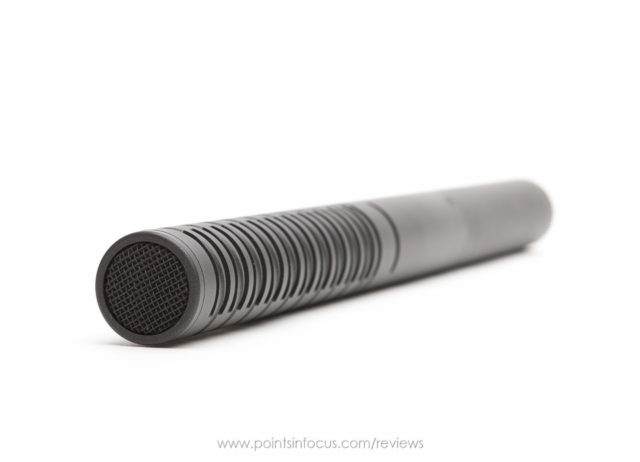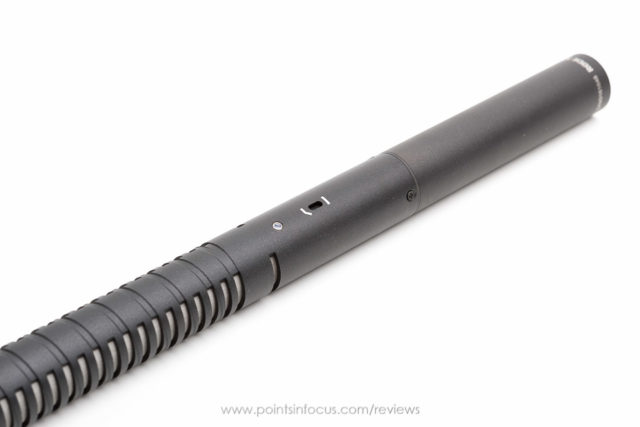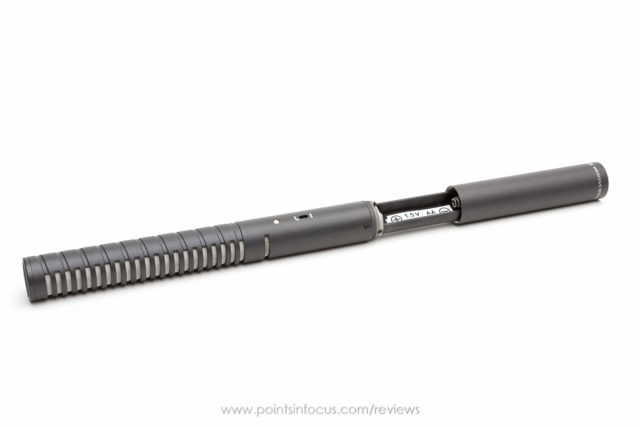Rode NTG2 Shotgun Microphone Review
I’ve taken a long hiatus from doing any kind of review of audio gear — my last review was published in July of 2014. Plus I’m not an audio expert, far from it. However, since I started recording my podcast, I’ve been truly forced to come face to face with audio gear in a way I haven’t had to in the past. That doesn’t mean I’m more comfortable with reviewing it, but at least I have more hands on time with it.
To put some context on this, I’m a still photographer. I jumped into trying video when I got my 5D mark III, and with that had to have some way to record audio. I never was any good at it, and broadly would classify my move as unsuccessful, but I haven’t completely abandoned the idea. That said, I’m not trying out recording a weekly podcast, and so I’m back to dealing with audio hardware again.
Okay enough of that, lets talk about the Rode NTG2. What is it? Why is it so popular? And is it still relevant?
Overview
The NTG2 is an entry-level shotgun microphone that has been designed to be as useful as possible to a pretty broad range of users. While it’s by far not the best shotgun mic that money can buy, it’s not the worst either.
Shotgun mics have long been favored for on camera use by electronic news gathering (ENG) camera operators and as boomed mics for audio recording in more cinematic productions. Their strong directionality allows some level of “focusing” in on the sounds you want to record and rejecting ones you don’t.
However, coming to audio gear from photography, there’s a world of difference between a directional mic and say a bigger telephoto lens.
The NTG2 is direction, but you can’t think of it as being anything like the microphone version of a telephoto lens. This is even more the case when recording indoors, where there are many surfaces near by for sound to bounce off of.

Polar Pattern
The NTG2 is a shotgun mic, which means it has a supercardioid polar pattern. This is a strongly directional response to sounds in front of the mic, with diminished respond to sounds from the side and rear. However, directly to the rear there is a zone where the mic will pick up sounds.
That said, the polar pattern is not uniform at all frequencies.
The characteristic shape of a shotgun mic comes from the interference tube that helps it become more directional. Te effectiveness of the interference tube in rejecting off axis sounds is related to its length and the frequency of the sound. A sort interference tubes, like the one on the NTG2 makes the mic much more directional for higher frequencies than lower frequencies.
The directionality of the NTG2 has never really impressed me. Then again, outside of my Video Mic Pro I don’t really have anything good to compare it to. Some of this also may be relative in experience, and lack of any formal training, in audio work.
There are times where I have found that I wish my NTG2 was more directional, but at the same time, I’m sure both my technique and understanding of what I was listening for and recording at would also help immensely.
Then again, the problem here comes down to money. There are much more directional shotgun mics, Rode’s NTG3 and NTG8 both preform much better in this respect. They also cost 2–5 times as much as the NTG2 does.
Frequency Response
Rode claims the NTG2 has a frequency response range from 20 Hz to 20 KHz. I don’t currently have the equipment to test this, but it would be trivial to prove or disprove, and I’ve never seen a review that claimed it was inaccurate.
More interestingly than the overall range is how the mic performs at various frequencies. Based on Rode’s published information, even without the high-pass filter enabled, there’s some 6 dB of roll off from 60 Hz to 20 Hz.
Additionally there’s a spike in the highs starting at about 5 KHz, peaking at about +5 dB around 10 or 11 KHz, and rolling back off to around 0 dB at about 19–20 KHz. As a point of reference, human voices typically fall in the range between 100 Hz and 5 KHz, where the mic’s response is flat.
Broadly speaking the frequency response of the NTG2 seems pretty similar to that of other microphones. The low frequency roll off is in part dictated by the size of the transducer, and pretty much every shotgun mic I’ve looked at specs for have some kind of peak around 10 KHz.
Both of those aspects, can be reduced (either in amplitude or frequency range) but doing so generally requires looking at significantly more expensive mics.
All of this said, I find it hard to really care to much about the frequency response in particular. At least not at a quantitive level. The range 20–20,000 Hz is more than adequate to cover the kinds of material I’m recording, and I’m not so absolutely concerned about perfectly accurately reproducing sound that I’m too concerned about what color the mic could add to the recording.
High Pass Filter
The NTG2 has a built in low-cut/high-pass filter. The filter has a fixed cutoff frequency of 80 Hz. The high-pass filter can be useful for removing low frequency background rumble that’s typical of urban environments.
Having a built in high pass filter is also useful given the ability to operate the NTG2 using an internal AA battery and plugged directly into something like an HDSLR — most of which don’t have any kind of options for filtering.
The biggest complaint I have with the high-pass filter is the switch for it. It’s a recessed slide switch, and you need a pen or something that sized to flip it. Generally that hasn’t been a problem for me as I either have a pen or my Really Right Stuff MTX tool with me anyway. But I think I would have liked either a slightly protruding switch or a button.

Incidentally, Rode’s newest shotgun mics, the NTG4 and NTG4+, do use buttons to toggle the high-pass filter.
Philosophically, I’m of the opinion that you want to enable the high-pass filter only when you need it, and otherwise record the full range of the mic. That said, losing below 80 Hz doesn’t seem like it should be that big of a deal, and most of the sound in that range, at least when recording audio for video, tends to be undesirable rumble not useful sound.
This is certainly not a one size fits all kind of thing. Your best bet is to listen critically with headphones to the ambient noise with the filter on and off and see which version you think sounds better in any specific environment.
Power
The NTG2 uses a condenser type capsule — the actual part that converts sound waves into electrical signals. This type of capsule requires power to operate.
Phantom power is not uncommon, virtually every audio recorder that supports XLR inputs, can provide phantom power. However, it is a challenge if you want to hook a mic up directly to a VDSLR. However, the NTG2 was designed with this issue in mind, it has dual power options.
- 48 V Phantom Power over the XLR cable
- 1- AA battery in the mic itself
There is one catch to the power situation. The output levels and impedance of the mic differs slightly based on how power is supplied. Using an AA battery will produce slightly lower levels than using phantom power.

Additionally, the mic is really designed for 1.5V alkaline AA batteries not 1.2V NiMH rechargeables. Using NiMH rechargeable may work in some cases, but it’s not guaranteed. Rode recommends using 1.5V alkaline AAs, and notes that if you hear pops in the audio signal you should switch to 1.5V alkaline batteries.
Being able to use a AA battery in the mic and a simple XLR to mini-phone connector to connect the mic to my camera was a pretty big selling point for me. In practice, I’ve never actually used it. I’ve always hooked the mic up to either a Zoom H4n or Tascam DR–60D(Affiliate Link) , and used it for power and recording.
Knowing what I know now, at least for my uses, I probably could have got a NTG1 and had a slightly more compact package that preformed equally well.
Output Levels
Okay let me cut to the chase here, I don’t really have a good handle on all the in’s and out’s of audio levels; dBfs, dBv, dBu, etc.. And honestly, I’m not sure I want one. Remember, I’m a photographer; my interest in audio comes either from needing to record audio along with video, or from doing a podcast. In a great many ways, my approach is if it sounds reasonably good to me, then it’s good enough.
That said, I’m mentioning audio levels here because the NTG2 may or may not have some problems in that respect with various recorders.
Specifically the NTG2 and the Zoom H4n are notorious for being a less than stellar combination. Out of experience, I would agree with this too, though it’s not entirely the NTG2’s fault. The combination of the two requires running the H4n’s gains very high.
Early, in recording my podcast, where I’m basically ~6 inches from the front of the mic, I had to have my H4n’s levels set to 80 out of 100, and that would still only net me around –20 or –24 dBfs. In tests I’ve done previously with the H4n and a NTG2 in roughly analogous positions to what you would have in a boomed mic over an actor’s head, the H4n had to be basically maxed out.
Other recorders, with less noise and better gain levels do a better job with the NTG2.
I’ve recently switched from using my H4n to using my Tascam DR–60D for recording my podcast, and I have a lot of headroom available if I need to turn things up. For the same ~6 inch distance, I’m running the medium gain and about 60% of max on the level adjust and getting between –20 and –16 dBfs in my recordings. And I still have another whole notch of gain should I need it.
Sound Samples
No mic review is really done without some audio samples.
| Without High Pass Filter | With High Pass Filter |
|---|---|
Both of these recordings were made with the microphone about 18 inches away over head. In addition I made no special attempts to control background noise form either the central AC fan, my air purifier, or my desktop computer. Finally, this was recorded in an environment that’s not especially well suited for audio recording, all the walls are untreated hard surfaces, and the floor is wood.
Also, all of my current podcast episodes are currently being recorded with the NTG2. It’s not an ideal solution for podcasting, but it is what I have and is working in a pinch. Though I would note, the EQ is tweaked in those recordings to boost the low end slightly, and I am closer to the NTG2 than one normally would be, which tends to accentuate the low end some as well.
Conclusions
So when I started one of my opening questions was whether the NTG2 was still relevant.
Part of that question stems from Rode’s release of two new microphones, the NTG4 and NTG4+, and the NTG4+ specifically. The NTG4+ drops the AA battery for an internal rechargeable lithium ion battery. But Beyond that it makes some improvements in directionality, especially rejecting sounds from behind the mic; and in the user interface, where Rode has switched to buttons for enabling and disabling the high-pass filter, pad, and high frequency boost options.
On the other hand, the NTG4 and NTG4+ are $100 more expensive than the NTG2.
Personally, I’m torn on the issue of whether or not there’s a recommendation here.
As far as audio quality goes, I have no qualms with the NTG2. It’s been a solid mic for me, but again I’m a photographer not a recording engineer. The output levels are low, so if you’re thinking about pairing this with a Zoom H4n, I would look at something else — though honestly I would probably look for a different recorder than the H4n more than anything.
As far as the power option goes, I did buy the NTG2 instead of the NTG1 on the premise that I might want to use the AA battery to hook it directly up to my camera instead of going through an audio recorder. However, I’ve never used it. Of course, the option to have it costs $20 over the NTG1, so I’m not sure it’s worth skimping on.
But the real problem I have with making a recommendation is that I don’t really have anything comparable to use as a point of reference, nor do I have the experience to make a sweeping conclusion. Certainly not to the level that I can with say a camera lens.
Would I buy the NTG2 again? Probably.
I’m not convinced, that the NTG4+ is worth $100 more to me. In theory it’s a bit more directional and a bit flatter. But it’s also $100 more money. The NRG1 is only $20 cheaper, but I lose the battery option if I want it — even if I’ve never actually used it. The NTG3 is a whole class higher end product, and at more than $600 it’s in a completely different price range.
The thing is, as I keep coming back to, I just don’t have the breadth of experience to say that this is definitively anything, good, bad, or ugly when it comes to being a shotgun mic.
(One note, if you buy this product form Amazon, make sure it was sold by Amazon.com and not another vendor using the Amazon storefront. Rode offers a 10 year warranty on their products, but only when purchased through authorized re-sellers, of which Amazon is one, but only when the item was actually sold by Amazon and not a 3rd party storefront.)
Comments
There are no comments on this article yet. Why don't you start the discussion?